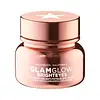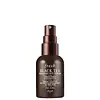What's inside
What's inside
 Key Ingredients
Key Ingredients

 Benefits
Benefits

 Concerns
Concerns

 Ingredients Side-by-side
Ingredients Side-by-side

Water
Skin ConditioningButyrospermum Parkii Butter
Skin ConditioningButylene Glycol
HumectantDimethicone
EmollientGlycerin
HumectantCetearyl Alcohol
EmollientCetyl Esters
EmollientIsostearyl Neopentanoate
EmollientCetyl Alcohol
EmollientPolybutene
Sodium Hyaluronate
HumectantCaffeine
Skin ConditioningTocopheryl Acetate
AntioxidantNarcissus Tazetta Bulb Extract
AstringentAminopropyl Ascorbyl Phosphate
AntioxidantLinoleic Acid
CleansingAcetyl Hexapeptide-8
HumectantArtemia Extract
Skin ConditioningHibiscus Sabdariffa Flower Extract
Skin ConditioningTrifluoroacetyl Tripeptide-2
Skin ConditioningAnthemis Nobilis Flower Extract
MaskingLaminaria Digitata Extract
Skin ProtectingCucumis Melo Fruit Extract
Skin ConditioningCetearyl Glucoside
EmulsifyingCholesterol
EmollientPersea Gratissima Oil
Skin ConditioningPyrus Malus Fruit Extract
Skin ConditioningLens Esculenta Fruit Extract
Skin ConditioningCitrullus Lanatus Fruit Extract
Skin ConditioningAlgae Extract
EmollientLauryl PCA
HumectantLactis Proteinum
Skin ConditioningYeast Extract
Skin ConditioningSodium Lactate
BufferingSorbitol
HumectantTrehalose
HumectantZinc PCA
HumectantGlucose
HumectantAcetyl Glucosamine
Skin ConditioningNeopentyl Glycol Diheptanoate
EmollientCarbomer
Emulsion StabilisingSodium Hydroxide
BufferingPropylene Glycol Dicaprylate
EmollientPolymethyl Methacrylate
Sodium PCA
HumectantDextran
Acrylates/C10-30 Alkyl Acrylate Crosspolymer
Emulsion StabilisingPolyethylene
AbrasiveDecarboxy Carnosine Hcl
Skin ConditioningPotassium Sulfate
Caprylyl Glycol
Emollient1,2-Hexanediol
Skin ConditioningTetradecyl Aminobutyroylvalylaminobutyric Urea Trifluoroacetate
Skin ConditioningMethyl Glucose Sesquistearate
EmollientBHT
AntioxidantDisodium EDTA
Phenoxyethanol
PreservativePotassium Sorbate
PreservativeSodium Benzoate
MaskingMica
Cosmetic ColorantCI 77891
Cosmetic ColorantCI 77491
Cosmetic ColorantWater, Butyrospermum Parkii Butter, Butylene Glycol, Dimethicone, Glycerin, Cetearyl Alcohol, Cetyl Esters, Isostearyl Neopentanoate, Cetyl Alcohol, Polybutene, Sodium Hyaluronate, Caffeine, Tocopheryl Acetate, Narcissus Tazetta Bulb Extract, Aminopropyl Ascorbyl Phosphate, Linoleic Acid, Acetyl Hexapeptide-8, Artemia Extract, Hibiscus Sabdariffa Flower Extract, Trifluoroacetyl Tripeptide-2, Anthemis Nobilis Flower Extract, Laminaria Digitata Extract, Cucumis Melo Fruit Extract, Cetearyl Glucoside, Cholesterol, Persea Gratissima Oil, Pyrus Malus Fruit Extract, Lens Esculenta Fruit Extract, Citrullus Lanatus Fruit Extract, Algae Extract, Lauryl PCA, Lactis Proteinum, Yeast Extract, Sodium Lactate, Sorbitol, Trehalose, Zinc PCA, Glucose, Acetyl Glucosamine, Neopentyl Glycol Diheptanoate, Carbomer, Sodium Hydroxide, Propylene Glycol Dicaprylate, Polymethyl Methacrylate, Sodium PCA, Dextran, Acrylates/C10-30 Alkyl Acrylate Crosspolymer, Polyethylene, Decarboxy Carnosine Hcl, Potassium Sulfate, Caprylyl Glycol, 1,2-Hexanediol, Tetradecyl Aminobutyroylvalylaminobutyric Urea Trifluoroacetate, Methyl Glucose Sesquistearate, BHT, Disodium EDTA, Phenoxyethanol, Potassium Sorbate, Sodium Benzoate, Mica, CI 77891, CI 77491
Water
Skin ConditioningGlycerin
HumectantButylene Glycol
HumectantPentylene Glycol
Skin ConditioningJojoba Oil PEG-150 Esters
Skin ConditioningMethyl Gluceth-20
HumectantPEG-6 Caprylic/Capric Glycerides
EmulsifyingAcacia Senegal Gum
MaskingPEG-40 Hydrogenated Castor Oil
EmulsifyingLycium Chinense Fruit Extract
AntioxidantSaccharomyces Ferment Filtrate
HumectantCamellia Sinensis Leaf Extract
AntimicrobialRubus Fruticosus Leaf Extract
MaskingLitchi Chinensis Seed Extract
Skin ConditioningAcetyl Tetrapeptide-5
HumectantTocopheryl Acetate
AntioxidantTocopherol
AntioxidantPolymethylsilsesquioxane
Carbomer
Emulsion StabilisingPEG-150
HumectantSorbitol
HumectantSodium Hydroxide
BufferingParfum
MaskingRhizobian Gum
Maltodextrin
AbsorbentAlgin
MaskingXanthan Gum
EmulsifyingAdenosine
Skin ConditioningPolyvinyl Alcohol
Cellulose Gum
Emulsion StabilisingCitric Acid
BufferingSodium Metabisulfite
AntioxidantDiamond Powder
AbrasiveSodium Benzoate
MaskingPotassium Sorbate
PreservativeHydroxyethylcellulose
Emulsion StabilisingSodium Citrate
BufferingBiotin
AntiseborrhoeicPhenoxyethanol
PreservativeLinalool
PerfumingCitronellol
PerfumingGeraniol
PerfumingWater, Glycerin, Butylene Glycol, Pentylene Glycol, Jojoba Oil PEG-150 Esters, Methyl Gluceth-20, PEG-6 Caprylic/Capric Glycerides, Acacia Senegal Gum, PEG-40 Hydrogenated Castor Oil, Lycium Chinense Fruit Extract, Saccharomyces Ferment Filtrate, Camellia Sinensis Leaf Extract, Rubus Fruticosus Leaf Extract, Litchi Chinensis Seed Extract, Acetyl Tetrapeptide-5, Tocopheryl Acetate, Tocopherol, Polymethylsilsesquioxane, Carbomer, PEG-150, Sorbitol, Sodium Hydroxide, Parfum, Rhizobian Gum, Maltodextrin, Algin, Xanthan Gum, Adenosine, Polyvinyl Alcohol, Cellulose Gum, Citric Acid, Sodium Metabisulfite, Diamond Powder, Sodium Benzoate, Potassium Sorbate, Hydroxyethylcellulose, Sodium Citrate, Biotin, Phenoxyethanol, Linalool, Citronellol, Geraniol
Ingredients Explained
These ingredients are found in both products.
Ingredients higher up in an ingredient list are typically present in a larger amount.
Butylene Glycol (or BG) is used within cosmetic products for a few different reasons:
Overall, Butylene Glycol is a safe and well-rounded ingredient that works well with other ingredients.
Though this ingredient works well with most skin types, some people with sensitive skin may experience a reaction such as allergic rashes, closed comedones, or itchiness.
Learn more about Butylene GlycolCarbomer is a polymer of acrylic acid. Its main role is to create a gel consistency.
A high amount of carbomer can cause pilling or balling up of products. Don't worry, most products contain 1% or less of carbomer.
Glycerin is already naturally found in your skin. It helps moisturize and protect your skin.
A study from 2016 found glycerin to be more effective as a humectant than AHAs and hyaluronic acid.
As a humectant, it helps the skin stay hydrated by pulling moisture to your skin. The low molecular weight of glycerin allows it to pull moisture into the deeper layers of your skin.
Hydrated skin improves your skin barrier; Your skin barrier helps protect against irritants and bacteria.
Glycerin has also been found to have antimicrobial and antiviral properties. Due to these properties, glycerin is often used in wound and burn treatments.
In cosmetics, glycerin is usually derived from plants such as soybean or palm. However, it can also be sourced from animals, such as tallow or animal fat.
This ingredient is organic, colorless, odorless, and non-toxic.
Glycerin is the name for this ingredient in American English. British English uses Glycerol/Glycerine.
Learn more about GlycerinPhenoxyethanol is a preservative that has germicide, antimicrobial, and aromatic properties. Studies show that phenoxyethanol can prevent microbial growth. By itself, it has a scent that is similar to that of a rose.
It's often used in formulations along with Caprylyl Glycol to preserve the shelf life of products.
Potassium Sorbate is a preservative used to prevent yeast and mold in products. It is commonly found in both cosmetic and food products.
This ingredient comes from potassium salt derived from sorbic acid. Sorbic acid is a natural antibiotic and effective against fungus.
Both potassium sorbate and sorbic acid can be found in baked goods, cheeses, dried meats, dried fruit, ice cream, pickles, wine, yogurt, and more.
You'll often find this ingredient used with other preservatives.
Learn more about Potassium SorbateSodium Benzoate is a preservative. It's used in both cosmetic and food products to inhibit the growth of mold and bacteria. It is typically produced synthetically.
Both the US FDA and EU Health Committee have approved the use of sodium benzoate. In the US, levels of 0.1% (of the total product) are allowed.
Sodium benzoate works as a preservative by inhibiting the growth of bacteria inside of cells. It prevents the cell from fermenting a type of sugar using an enzyme called phosphofructokinase.
It is the salt of benzoic acid. Foods containing sodium benzoate include soda, salad dressings, condiments, fruit juices, wines, and snack foods.
Studies for using ascorbic acid and sodium benzoate in cosmetics are lacking, especially in skincare routines with multiple steps.
We always recommend speaking with a professional, such as a dermatologist, if you have any concerns.
Learn more about Sodium BenzoateSodium Hydroxide is also known as lye or caustic soda. It is used to adjust the pH of products; many ingredients require a specific pH to be effective.
In small amounts, sodium hydroxide is considered safe to use. However, large amounts may cause chemical burns due to its high alkaline.
Your skin has a natural pH and acid mantle. This acid mantle helps prevent harmful bacteria from breaking through. The acid mantle also helps keep your skin hydrated.
"Alkaline" refers to a high pH level. A low pH level would be considered acidic.
Learn more about Sodium HydroxideSorbitol is a sugar alcohol. It is a hydrating and moisturizing agent created from the reduction process of glucose.
Most sorbitol is usually made from potato starch. It is also found in fruits such as apples and pears.
As a humectant, Sorbitol helps draw water to the skin. This helps keep the skin hydrated. Sorbitol also helps create a thicker texture in products. You might find sorbitol in your toothpaste and other gels.
It is a non-irritating ingredient that is great for those with dry skin.
Sorbitol is a prebiotic. It helps promote the growth of healthy bacteria on your skin. The bacteria on your skin form a microbiome. This microbiome helps protect your skin from infection and harmful bacteria.
Learn more about SorbitolTocopheryl Acetate is AKA Vitamin E. It is an antioxidant and protects your skin from free radicals. Free radicals damage the skin by breaking down collagen.
One study found using Tocopheryl Acetate with Vitamin C decreased the number of sunburned cells.
Tocopheryl Acetate is commonly found in both skincare and dietary supplements.
Learn more about Tocopheryl AcetateWater. It's the most common cosmetic ingredient of all. You'll usually see it at the top of ingredient lists, meaning that it makes up the largest part of the product.
So why is it so popular? Water most often acts as a solvent - this means that it helps dissolve other ingredients into the formulation.
You'll also recognize water as that liquid we all need to stay alive. If you see this, drink a glass of water. Stay hydrated!
Learn more about Water